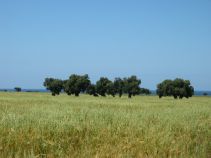you are in:
News
The cultivation of olive trees in the Park has ancient origins, as evidenced by the centuries-old agricultural landscape that distinguishes among the oldest in the Mediterranean, undisputed symbol of Puglia. These groves are in fact the same age as the Via Traiana - the important Roman road opened in 113 AD - running through the flat olive grove, the ancient Egnatia, in the territory of Fasano, to the columns of the ancient Roman port of Brindisi. The olive grove is a historic semi-natural environment that has remained intact over the centuries. Cultivated extensively, it has 50-60 plants per hectare, randomly arranged according to the original location of the olivastro - olive, spontaneous species of the maquis shrubland, pre-existing the sativa and then grafted with the latter to get olive oil.
Among the ancient trees of the park we find a dense network of dry stone walls, which, in addition to qualifying the landscape, is an instrument for the biodiversity protection. Among them, the last stretches of maquis shrubland and oaks still survive. Hoopoes nest in the hollow trunks of ancient olive trees, while the vast expanses of arable land tracked by ancient olive trees are the perfect hunting ground for many species of birds of prey in transit. It’s common to see here marsh harriers and montagu´s harriers. During the night, the skies of the park are dotted with owls: of particular interest is the rare transit of the short-eared owl; More commonly you’ll see barn owls and little owls. An evidence of their passage can be seen in wads, or regurgitation of hair, bones and other indigestible parts of small mammals prayed.
Between April and May the pastures and arable lands are hunting areas for lesser kestrels and red-footed falcons, looking for insects, lizards and small mammals. More common than the lesser kestrel is the kestrel, who attends the protected area throughout the year and nests in abandoned farms and in natural cavities which open in the rocky walls of the lame. In winter, in the small marshes that form in cultivated fields, it’s likely seeing golden plovers, lapwings and flocks of skylarks. In summer, the area is frequented by nesting species, such as crested larks, zitting cisticola and stonechats.
In warmer weather the dried thorny herbaceous plants in the pasture provide seeds for crowds of goldfinches, linnets and greenfinches. The voice of the corn bunting is peculiar and more common in pastures than the one of the salicornia (glasswort) areas, where it nests. During the migrations, the inner zone of the protected area is frequented by western yellow wagtails, tawny pipit, wheatears, whinchats and rare greater short-toed lark. The song of the quail is unmistakable , while they are hidden among the crops not yet mowed, the stubble and the plantations of beans. You’ll see big amounts of swallows, common house martins, sand martins and swifts flying over the fields in search of insects to catch. Less widespread, the reddish swallows.
Newsletter
Park Authority






